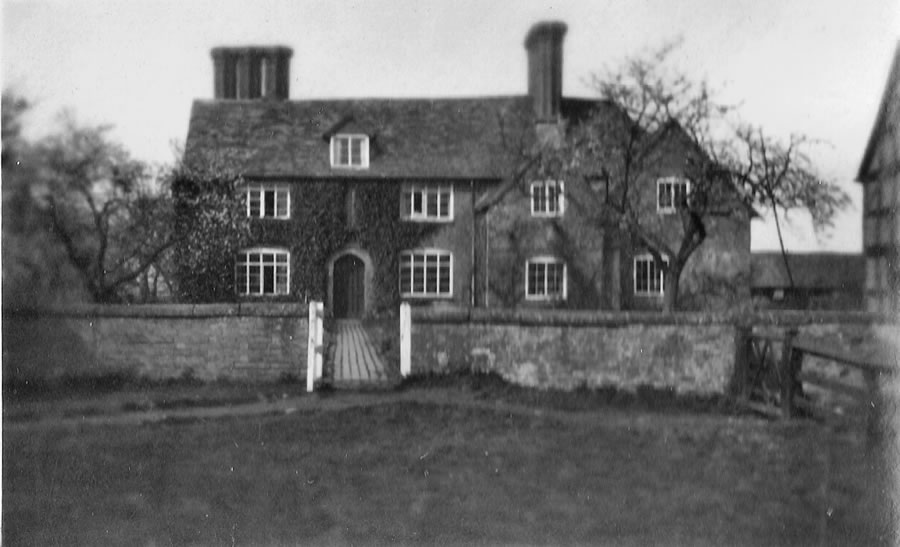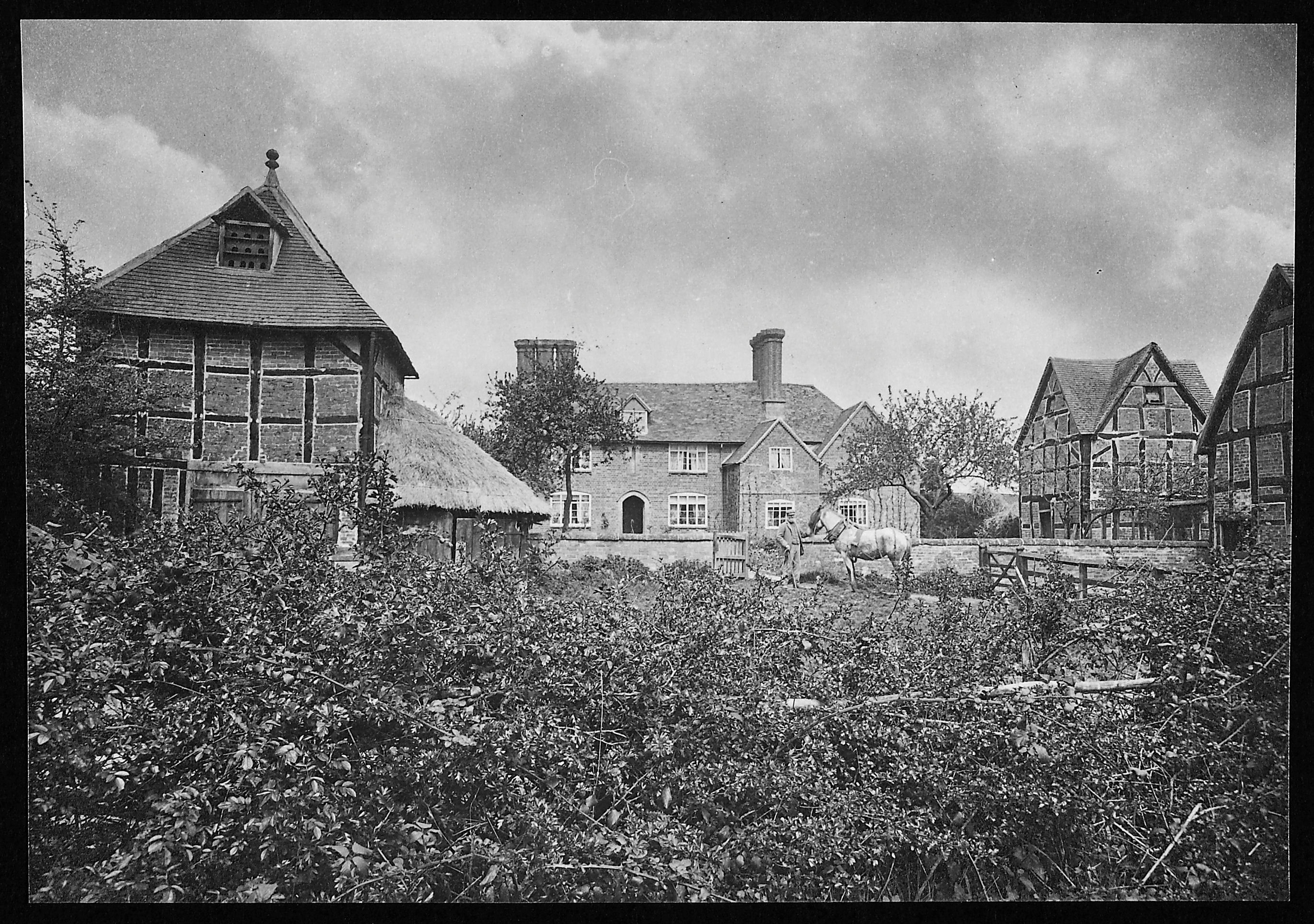Andrew Morton takes us to the real Bag End - A Very English Place (30.12.12 by Andrew Morton) -
Comments
We have all come to known Bag End as the home of Bilbo and Frodo Baggins and the beginning of many adventures. Not many are aware that Bag End was a name Tolkien borrowed from a real place called Bag End, the farm at Dormston in England, where tolkien's maternal aunt Jane Neave lived. So, I am very pleased to be able to bring an essay on Bag End by Andrew H. Morton, the person who knows more about the place then anyone else.
Andrew Morton is the author of tolkien's Gedling and tolkien's Bag End, two short books which present new and previously un-researched material on the author's earlier life.
Bag End - A very English Place
Apart from one rather dismissive reference, JRR Tolkien has very little to say about Bag End, the farm at Dormston in Worcestershire, owned in the 1920s by his maternal aunt, Jane Neave. Whatever there is to say about this charming corner of the English countryside I tried to cover in my short book tolkien's Bag End. Tolkien was, after all, writing a work of fiction, and although he borrowed the name Bag End, he had better things to do than enumerate the ways in which Bag End ("bag-end" in The Hobbit) might have given birth to his fictional creation. It is also fair to point out that tolkien's visits to Bag End precede by some years his writing of The Hobbit, so any resonances the place might have evoked would be purely retrospective.
In my book, I spend some time looking for obvious links between the fictional and real Bag Ends; a few of them are very telling and clear, but many are the subject of reasoned speculation rather than hard fact. In this essay, I intend to look at the ways in which a place like Bag End mirrors changing English social structures and attitudes, and the way those general factors are reflected in tolkien's writing. Naturally, Tolkien would not have needed a lecture in English social history from Aunt Jane, but the general ambience and history of the place must have made some impression on him.
Jane had done her research; having sifted through the deeds, it was she who discovered that the charmingly English name Bag End was the original, and, according to locals, proper name of her farm. It may even be that the words "Bag End" and his recently discovered Yorshire dialect word "baggins" started to from an alliance in his linguistic imagination.
Bag End Farm is a substantial but by no means an elegant construction; in fact it is rather a hotchpotch of styles spanning hundreds of years. There is the obvious Elizabethan restyling of the house which gives the west wing its distinctive appearance, but there is also the practical 18th century wing facing the farm and the familiar substantial rebuilding of the southern aspect of the farm, which probably dates from the early 19th century; another notable feature are the clearly dated 15th century dovecotes; even further back in history, it may be that the medieval predecessor (possibly fortified) and some form of pre-Conquest house left their mark in the general ground-plan, floors and timbers, which were almost certainly reused. There are narrative and thematic elements in this history which find expression in tolkien's fiction.
The first might be to do with the early evolution of English society in the Kingdom of Mercia, into which the Hwicce Saxon people (tolkien's ancestors on his maternal side, he claims) had been incorporated, perhaps in the 7th century. In Deormodsealdtune (Dormston) it is reasonable to suggest that Deormod must have had a house and this house may well have stood on the site of Bag End Farm. It would have been a timber dwelling, made from timbers hewn from the trees of the Feckenham Forest, in which Dormston was just one of many extensive clearings. The first clear historical sighting of Dormston comes much later in a 10th century charter of King Edgar, but something of the nature of early Mercia can be surmised from the historical record. Here was a place where peoples and cultures met and melded – early Christianised Saxons with pagan Angles, and, just over an ill-defined border, Celtic Britons – the Welsh. Not until Offa's time was a clear demarcation between English and Welsh territory established. A map of this part of the West Midlands shows many names of Celtic origin, among them the Malvern Hills, which are clearly visible from Dormston. tolkien's fiction is full of the meetings of different races and different languages. He revels in what today we might call cultural diversity. But Tolkien is strongest when he draws from the Anglo Saxon temperament – the valiant fatalism, the honour and loyalty regardless of reward of this culture pervades his writing. Deormod's house was probably of modest wooden construction - certainly nothing like the Meduseld of Lord of the Rings - but it's inhabitants may have shared some values with those of The Mark (Mercia). What emerges of Mercia from the mists of time may be skimpy, but those are the mists that give full rein to tolkien's narrative and emotional power.
There was certainly a large degree of continuity between late Anglo Saxon Dormston and the era of Norman domination. The Dormston records of the late 10th century are very similar to those presented in Doomsday, but now we have a new Norman overlord and the arrival of a stricter form of feudalism. The suzerainty of Peter of Westminster is supplanted by that of Roger de Corbuzon and eventually, for several hundred years, by the Russells of Strensham. These are lords of the manor of Dormston in the pattern that was established by the Norman invasion. The remnants of feudalism linger on in this country even to the present day in our royalty and aristocracy – something more than a useless appendix, at least for the conservative minded. tolkien's human worlds reflect the strong tribal bonds of the Anglo Saxon world, but also a strong flavour of later Norman feudal values – the ideas of primogeniture, allegiance to the hereditary lord and the fear of disorder when these patterns are disrupted. This is particularly true of the Aragorn narrative, which is central to the story of the Ring. These values are all part of the genre of The Lord of the Rings, which resembles more than anything that of the medieval romance. Those who have an aversion to tolkien's writing will often cite this male dominated, martial, hierarchical milieu as an obstacle to their enjoyment of his fiction.
It is a prejudice often encountered, although one that misses the strong moral purpose of tolkien's writing which distinguishes it from the sword and sorcery genre. But during the post-conquest, medieval and early modern eras, the history of Bag End is largely defined by a series of warlike and often politically significant men who are strongly rooted in the values of feudal loyalty. Maybe tolkien's innate conservatism found a resonance in these values, but more significant is the stirring narrative potential of medieval quest literature typified in the Arthurian romances.
In tolkien's Bag End, I argue that the kind of rebuilding of Dormston Manor which took place in 1582 has an iconic significance for the English mentality. The Elizabethan era was a boom-time for building in Worcestershire, perhaps fuelled by a new confidence of ownership under the post Reformation regime, and it took the same form all over: large, impressive timer-framed constructions which remain to this day emblematic of a certain idea of the English home.
With his determined, and perhaps a little romantic, insistence on his ancestral Worcestershire roots, his 1923 visit to the picturesque Bag End must have resonated with him in a very definite way. With his Aunt Jane now established as a kind of lord of the manor, he may well have felt closer to an aspect of England that lives in the imagination of every Englishman. It is a nostalgic vision, fanciful perhaps, but one that continues to have a powerful hold.
When the Russell family finally depart from Dormston in 1755, there appears to be a period of decline for Bag End. What had been a high status residential building is remodelled as a farm with the building of the distinctly utilitarian east wing and we see the local farmer yeomanry, the Callows, the Collinses and the Savages jockeying for position in the carve up of the land which took place after the relatively late enclosure at the end of the 18th century. The details of the haggling, land grabs and petty rivalries are hinted at in documents of the time from the Worcestershire archives. What is clear is that a different class of person is involved in transforming the medieval strip farming of the common land into a more identifiable modern pattern of farming with Bag End Farm taking the lion's share, about a quarter of the old Dormston parish. Later on, in the 19th century, another class of wealthy bourgeois incomers take up residence at Bag End, taking care to gentrify what had been a down-at-heel scruffy old farm into a distinctly "des res" with farm attached. This was the form in which Jane Neave bought it in 1922.
The Shire, Hobbiton and Bag End in tolkien's fiction distinctly resemble this early modern period and much of tolkien's humour is in his presentation of the material pretensions and the petty social rivalries that Bag End generates. In a way, The Shire is a kind of Merry England, a largely amiable place where hobbits just get on with life in a sensible, traditional way. No one lords it over them and no one is noticeably downtrodden. However, the rivalry between the Bagginses and the Sackville Bagginses provides a rich source of humour whilst at the same time sounding a darker note in the final chapters of The Lord of the Rings and The Hobbit. Bilbo and Frodo's status in the hobbit community is undeniable, and it is possible that, as Tom Shippey suggests, the name Bag End (read suburban cul-de-sac) evokes some mild middle class pretensions. A natural social superiority would accrue to anyone who lived at Bag End, as tolkien's Aunt Jane did in the 1920s. There is no evidence that Jane Neave adopted any kind of superior attitudes during her stay at Bag End – quite the opposite – she was a well respected and well integrated member of the community, not only during her period at Bag End, but later, when she returned to live at the small cottage she retained in the late 1930s. Nevertheless, she did own the big house; she was a slightly mysterious incoming lady farmer with a female business partner and some distinctly modern ideas. She was more than a little "Tookish". As such, she certainly was a bit of a curiosity in Dormston, and, until recently at least, is remembered as such by elderly inhabitants. To this extent, Aunt Jane assumed a similar status to that of the Bagginses, a fact that may have amused Tolkien and may have come into play when he came to construct the fictional Bag End and the social status of Bilbo and Frodo Baggins.
JRR Tolkien was inordinately proud of his historical English roots, strongly identifying with the county of Worcestershire. If our complex national character and values have been forged in our long history, then layers of this history are encoded in the bricks and timbers of Bag End Farm.
Type: Paperback
Extent: 88 pages
Publisher: Brewin Books
Publication date: June 22, 2009
Language: English
ISBN-10: 1858584558
ISBN-13: 978-1858584553
Spread the news about this J.R.R. Tolkien article:


